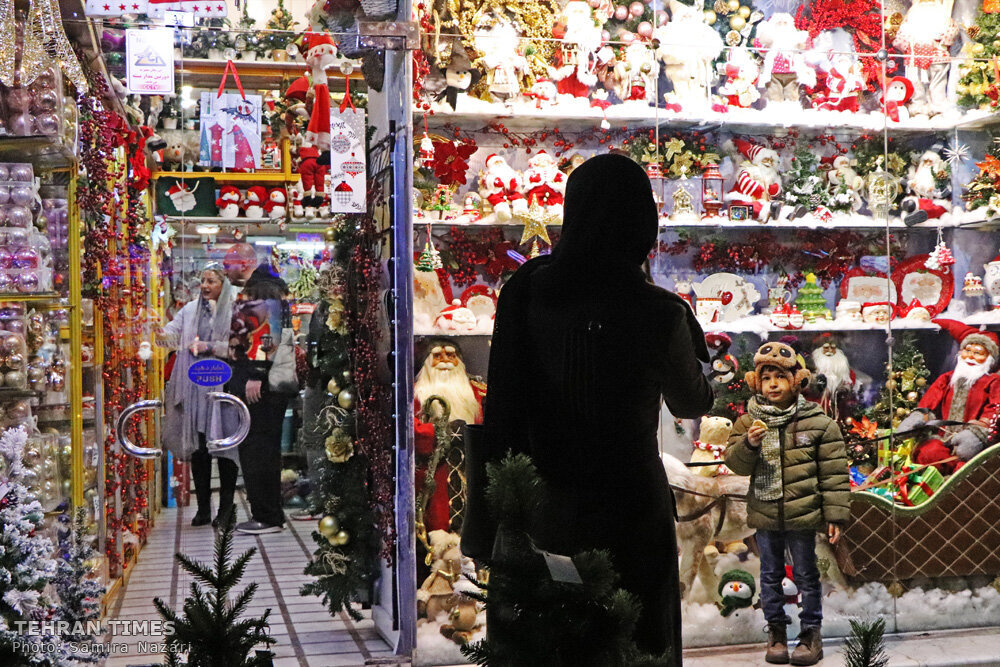A peek into Christmas celebration in Iran

TEHRAN (MNA) – One may not expect Christmas celebration in a country where 99 percent of its population is Muslim, but surprise is awaiting you in the case of Iran.
Christians comprise less than one percent of Iran’s population, however, they are enjoying the freedom to perform their rituals and celebrate their festivities.
Most of the Christians in Iran are Armenians who have lived here for centuries. Assyrians, Catholics, Protestants, and Evangelical Christians constitute the rest of Christians in Iran.
Armenians follow the Oriental Orthodox denomination of Christianity and accordingly, celebrate Christmas on January 6, concurrent with the Epiphany.
To better understand the rituals of these people on the eve of Christmas, I reached out to our long-serving colleagues at the Tehran Times Daily, Herand Baghdasarian. As an Armenian Christian, he has been working the daily for 21 years in different sections.
I asked him to give a general explanation about his community’s traditions for Christmas. “Christians in Iran have their own peculiar Christmas festivities and rituals. On Christmas Day, which falls on January 6th, Christians celebrate Jesus Christ’s birthday by feasting on a traditional chicken stew called ‘harissa’, or on a roast turkey,” he said.
“Like other Christian nations, Armenians design and decorate the Christmas tree, buy new clothes and usually give gifts to children.
Asked about the coexistence of Muslims and Christians in Iran, he highlighted that these two have lived peacefully along with each other. “Iranian Armenians, are Iranians of Armenian ethnicity who speak Armenian as their mother tongue. Armenians have lived in Iran for millennia,” he said, noting, “They have lived peacefully and friendly with their Muslim people.”
“After the Islamic Revolution, Armenians have also served in the Iranian Army and many have died in the action,” Baghdasarian said, referring to the eight years of Iraqi imposed war on Iran (1980-1988), also known as Sacred Defense, where thousands of Armenians went to the frontline along with their Muslim brothers to defend the country. The Armenian Diocese of Tehran told me that 114 Armenians from across the country have been martyred during the war.
Baghdasarian went on to point to his community’s position in Iran’s politics, saying, “The Armenians remain the powerful religious minority in Iran. They have two seats in the Iranian Parliament.”
He referred to the need for training the youth generation for following the community’s traditions. “The rising generation follows the past traditions and religious rituals like their forefathers; Parents must educate their children to follow in the footsteps of their ancestors on observing and perpetuating these rituals.”
Armenians have mainly gathered in Majidieh neighborhood in Tehran, and Jolfa neighborhood in Isfahan. Taking a walk in these regions at the time of Christmas, one cannot ignore the energy and spirit of the community that is preparing for the New Year.
I asked Baghdasarian where he wishes to spend Christmas celebrations and the answer was Isfahan. “I prefer the city of Isfahan since Christmas festivities are tremendously fascinating in Jolfa district where pine trees are beautifully decorated with string lights.”
“Vank Cathedral is the most significant church in Iran. Shops are crowded and people are very busy shopping, walking around and taking photos,” he concluded.
Leave a Comment